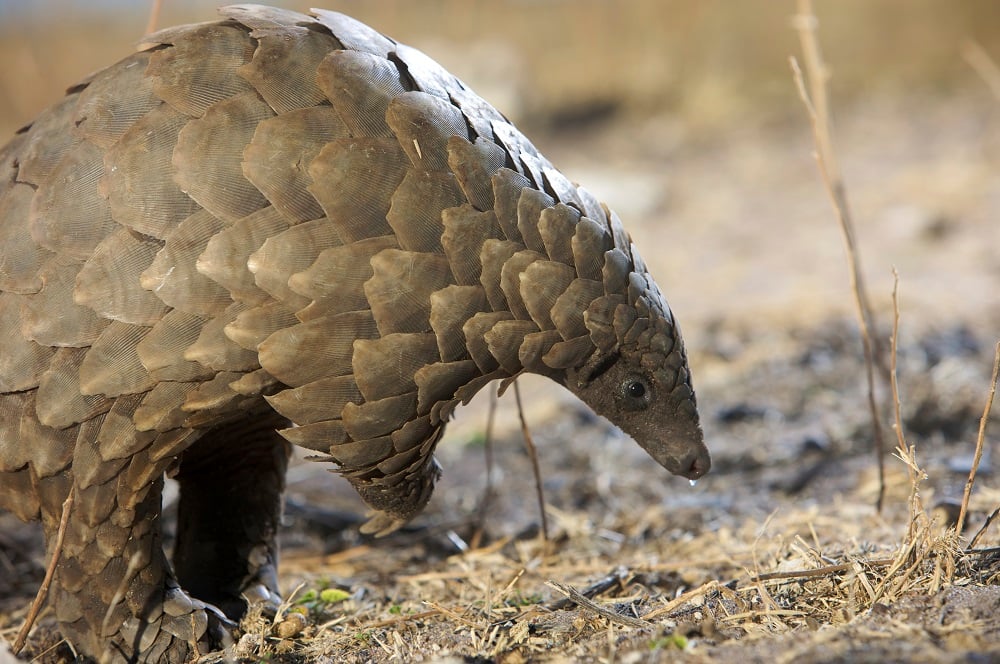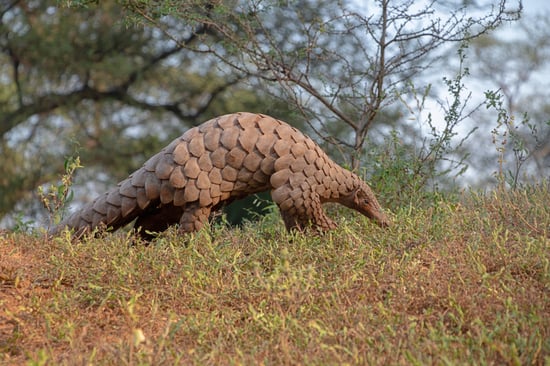
Pangolin facts
Common name: Pangolin
Scientific name: Pholidota
Distribution: Africa, Asia
Here are some phenomenal facts about pangolins!
Pangolins are solitary, primarily nocturnal animals – so there’s a good chance you aren’t too familiar with them. They look pretty cool with their scale-covered bodies, which acts like a suit of armour to protect them – but a pangolin’s biggest threat isn’t a predatory animal, it’s humans.
The name, “pangolin”, is derived from the Malay word “pengguling”, which loosely translates to “something that rolls up” – and the name is pretty literal, because that’s how they defend themselves. When feeling threatened, the small mammals roll up in a ball, so only their scaly suit of armour is exposed. You may have seen an echidna or armadillo doing the same thing on a nature documentary!
Pangolin scales are made of keratin, the same protein that makes up our own hair and nails. They cover almost their whole body, except the underside, and make up roughly 20% of a pangolin’s body weight.
Also similar to echidnas, pangolins have no teeth, and long sticky tongues to catch their food. And they love to eat ants. They are insectivorous, so their diet also includes termites, larvae and other small insects and they can eat up to 70 million insects each year! This makes them a great natural pest controller.
There are eight pangolin species that live in Africa and Asia. You’ll find the Black-bellied pangolin, White-bellied pangolin, Giant Ground pangolin and Temminck's Ground pangolin in Africa. The Indian pangolin , Philippine pangolin, Sunda pangolin and the Chinese pangolin live in Asia. Depending on species, they can weigh from 1kg to 3.3kgs and measure 85cm to 1.8m nose to tail.

Pangolins are sentient beings – they think, feel, and have unique personalities
- Pangolins have a clever adaptation for eating ants and termites, once they have sniffed them out, they close their ears and nostrils, to prevent their prey from biting back.
- Pangolins have overlapping scales that serve as armour from predators such as lions, but also their biting prey – ants and termites. Scientists are studying their scales to get ideas for armour for humans.
- The giant pangolin has a tongue that is nearly half its length - 70 cm!
- Pangolins do not have very good hearing or sight, but they have an excellent sense of smell.
- Pangolins hiss when they are disturbed.
- Pangolins regularly nod and shake their head, but scientists are not sure why. It may be to detect odours in the air, locate smells or sounds, or it may be a form of communication. So little is known about pangolins, scientists are still learning.
- Mother pangolins are very protective, they carry their young on the base of their tail, and if they are disturbed, the mother will quickly coil into a sphere around her young.
- Pangolins tend to suffer in captivity. As so little is known about pangolins, their needs cannot be fully met in captivity, and captive pangolins often die from malnutrition, disease and stress.
